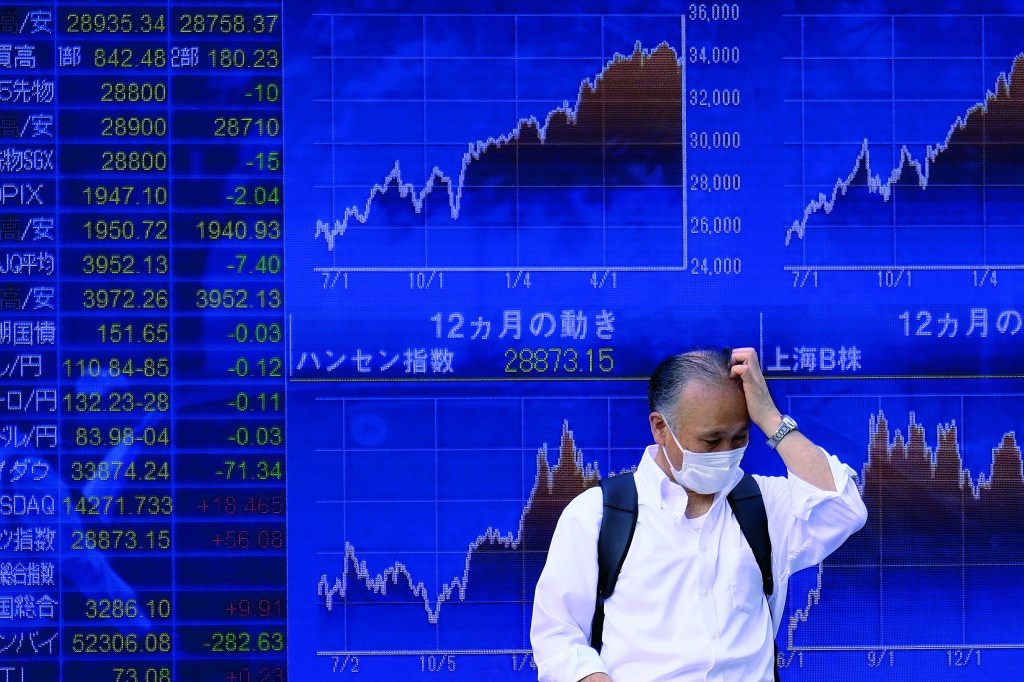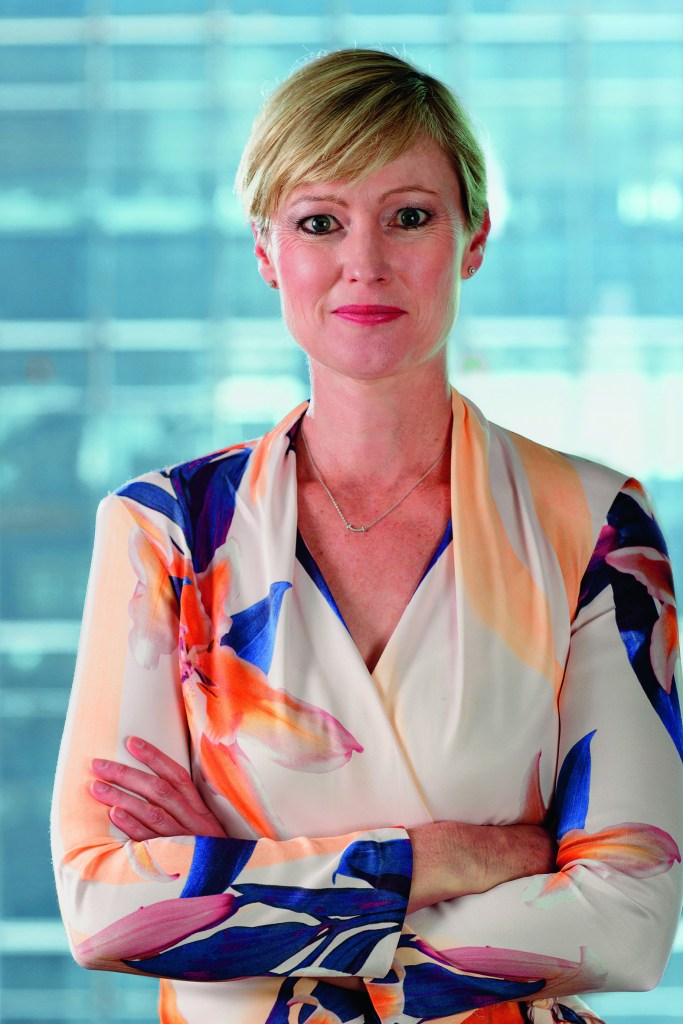Kylie Willment is chief investment officer at Mercer for the Pacific region, leading a team managing a multi-billion-dollar portfolio.

Kylie Willment moved to London in time to catch the boom years of investment banking in the late 1990s. Next stop was Sydney and NSW Treasury Corp from where she watched the global financial crisis unfold. More recently, she joined asset manager Mercer where she is now chief investment officer for the Pacific region, leading a team managing a multi-billion dollar portfolio.
How do you handle the multiple risks facing the world’s economy now?
This year is more difficult than early 2020 [when the market crashed because of the pandemic] because I think the range of factors are much more complex and while the pandemic was an absolute curveball, we always knew it would pass at some point.
Whereas now, we’ve got the confluence of some multi-decade megatrends that are at a turning point, particularly the return of inflation and the interest-rate cycle. We already knew we would have to go through a normalisation process… but not with these extra factors on top of it: the pandemic recovery; the withdrawal of stimulus; a conflict in Ukraine; ongoing lockdowns in China, and; a geopolitical landscape.
If inflation was the only problem, where would you put your money?
Always diversified. There is never going to be one investment. You’re talking inflation-linked bonds, you’re talking gold, you’re talking real assets, property, and infrastructure, and you’re talking equities that have pricing power… they can pass on inflation to their consumers… Usually very monopolistic or in-demand brands… We’ve all gone back to look at [the 1973 oil crisis and subsequent inflation] to see what the parallels are .. and there might be some… but ultimately, we’re dealing with a different and more complex set of circumstances. I don’t know if taking history and applying it to today is going to be the right way to go.
If a war in Ukraine was the only threat?
Overweight energy. Underweight Europe.

If it was just a jammed-up supply chain?
That manifests more broadly across the market, so you’d be more defensive. Underweight equities and overweight bonds. Just until those supply chain issues worked their way through. It manifests in certain industries but the flow on is more broad-based.
If it was just tech disruption?
You’re looking for sectors that benefit from being the disruptors. Private equity is a big place for that. Venture Capital.
What about disruption from the creator economy, all these influencers?
It doesn’t hit the radar for us. It’s not investable for us as institutional investors, and I would suggest not material enough to come up on our radar. But it is worth noting that traditional media and entertainment stocks are being affected.
Blockchain and crypto?
We are not seeing crypto as investible for institutional investors. At least at this point. It’s highly speculative and that’s not what we tend to do with our investors’ money.
If climate change were the only problem?
We’ve done a lot of analysis. We’ve mapped out the portfolio on the spectrum of what we call the greys, the greens, and the in-betweens. The greys will be the high emitters today with very limited transition capacity; the greens have got low emissions today and a lot of transition capacity or they’re part of the solution – green tech or renewable energy.
And you’ve got this great big rump that’s got varying levels of emissions and variable levels of ability to transition to a lower-carbon business model. There is no easy path around this from a portfolio sense. Over time we want to reduce the greys and increase the greens.
Do you do that for social good or for economic reasons?
Both. Ultimately, we are investors, so our primary goal is to produce a financial outcome… but we see climate as a massive systemic risk not just for society and the environment but also financially. The global economy has to go through this extraordinary transformation to get us to net zero by 2050. There is inherently a huge amount of financial risk that comes with that. There’s also opportunity, of course. The risks are in the grey, the opportunities are in the green and the rump we say we want to “steward”… so they can transition over time.
Given all the swirling risks, where are you going light and where heavy?
The secret sauce is to have a diversified portfolio. I don’t think it’s going to be about picking one best investment. It’s about not getting too reactive to short-term extreme market events, but ultimately recognising that we will navigate our way through this, focus on the long term, build up a diversified portfolio and understand tolerance for risk. Be a bit humble about where you might be right and wrong. Accept the uncertainty.
Interest rates: how high can they go and for how long? What you’re doing about it.
How high and for how long interest rate rises can go will depend on the persistence of inflation and the willingness of central banks to tolerate low growth to lower that inflation. At a high level, inflation is being driven by both temporary factors, such as global supply chain disruptions and the rise in commodity prices following the invasion of Ukraine, and more persistent factors, such as tight labour markets and rising labour costs.
So far, some of the temporary factors are showing signs of easing, however the more persistent factors have not. Despite this, some central banks have started to exhibit some caution in their approach. For example, the RBA became the first central bank to “pivot” and reduce the pace of interest rises in early October. This suggests that central banks are perhaps not too far away from at least pausing and reassessing the direction of monetary policy in the coming months.
The 2.85% cash rate could possibly overshoot towards 3.5-4% next year before converging to our longer term expected cash rate of around 3.0%.Bond markets have already anticipated this and bond yields can reasonably be expected to stabilise around current levels. At the same time, it is quite possible for inflationary pressures to persist, and central banks may face difficult choices.
Are there headwinds on the horizon you are watching closely? Or light at the end of the tunnel?
There may be light at the end of the tunnel. For example, central banks are now becoming more careful in hiking, noting that we could end up in a hard landing otherwise. Some regions will be worse hit by an economic slowdown than others, particularly Europe which is dealing with an energy crisis. China could also see a further economic slowdown, given the recent tightening of power and no shift from its Covid lockdown strategy.
However, we think Australia is relatively better positioned than the rest of the world, not just because Australia is more remotely located from current geopolitical pressure points, but also because we are a net energy exporter.
Recent geopolitical events have highlighted the need for national, food and energy security, energy innovation and an overhaul of infrastructure and supply chains. Elevated commodity prices do help … and we’re also one of the few countries left with an AAA credit rating. Given the confluence of factors at the moment, many of them unprecedented if not extreme, it is important to stress that a range of outcomes is still possible. This again demonstrates the importance of diversification in building portfolios.